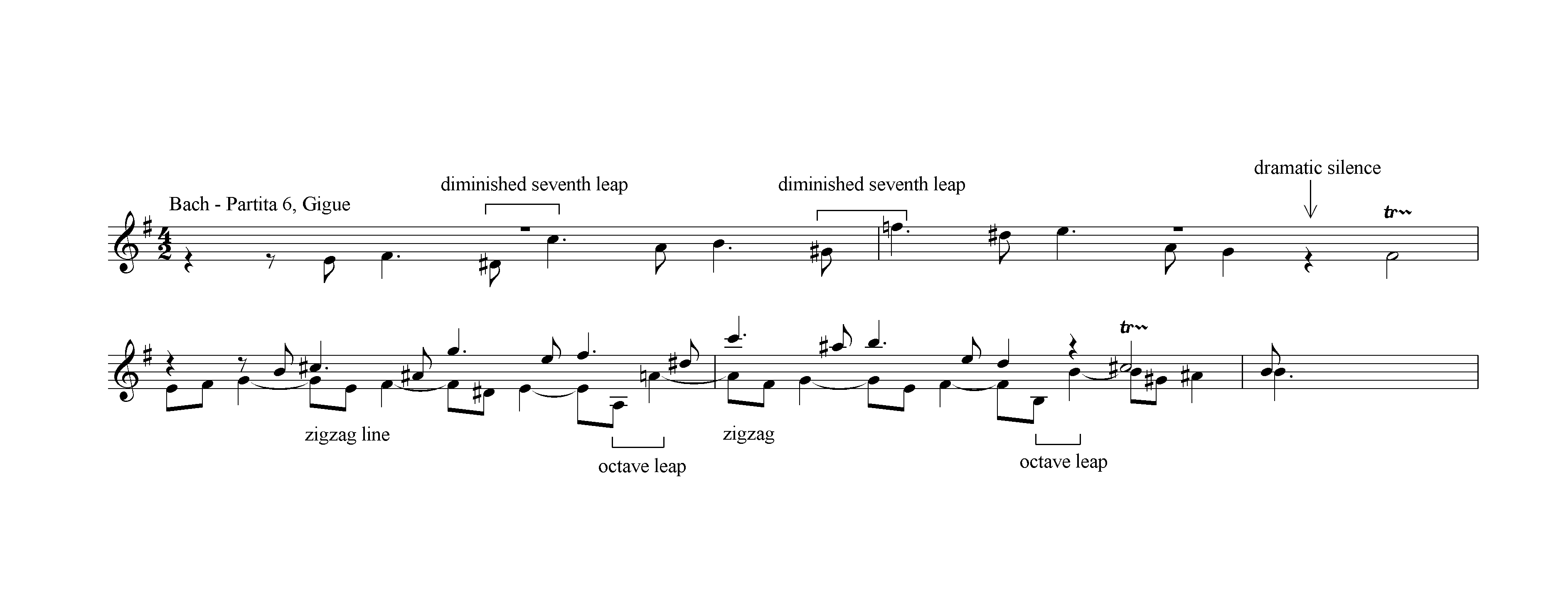
home | contact | sound samples | discography | calendar | reviews and testimonials | photos and press materials | site map | mailing list sign-up |
||
|
||
|
||
|
 |
|
Essay by Michael Arnowitt, February 2021
No doubt Bach called his partitas by that name because they have many different parts, each influenced by a particular dance tradition of Bach’s time some 300 years ago. But the more I started deep-diving into learning Bach’s sixth partita for a recent performance, the more I realized how unusual this particular partita is.
All Bach’s English Suites, French Suites, and Partitas end with a gigue, and the sixth partita is no exception. A gigue is a fast lively dance type with a lot of triplets, the notes grouped 1 2 3, 1 2 3, 1 2 3, 1 2 3. If you have ever heard a British Isles folk fiddler play a jig, well gigue is just the French word for the same dance idea. But in this sixth partita some sort of strange role switching is happening because the gigue doesn’t have any triplets at all. Instead, the next to last movement of the partita, marked Tempo di Gavotta, is the one that has lots of gigue-like triplets, which seems particularly odd to me as all the famous gavottes I can think of are very duple in meter. (Well, I guess Bach only said it was in the tempo of a gavotte, he didnít literally say it was a gavotte.) Here’s an excerpt from this gavotte-that-is-really-a-gigue which surely sounds like British Isles folk fiddling.

So if the gavotte plays the role of the gigue, what music does Bach write for the gigue itself to conclude the partita? Instead of the usual cheerful, happy-go-lucky tone of his other gigues, for this partita he composed an intense, angular fugue, very serious and gritty. The melody of the fugue’s theme has big arching upward leaps, using the unusual jump of a diminished seventh, and has a dramatic silence in the middle of the line, while its countermelody contrasts with its own distinctive character, comprised mostly of small zig-zag motions where each new note of the line goes alternately up and down, separated by occasional upward octave leaps, so a leap even a little larger than the already large leaps of the opening melody. The beginning of the gigue is pictured below:

I realized after working on the piece for a while that the gigue being a big, serious fugue made it a companion bookend to the opening movement Toccata of the partita which is also dominated by a powerful, serious fugue that is hypnotic and beautiful. The opening movement itself has a bookend structure as its fugue is bracketed by a prelude opening that returns to make an epilogue at the end of the first movement. So we have bookends within bookends. One of the most moving Bach performances I have ever heard is the performance of this opening Toccata movement played by Glenn Gould as part of the documentary film The Retreat by Bruno Monsaingeon.
Between the opening toccata and the final gigue, many wonders await the listener in the middle sections, including a truly amazing Sarabande, and more. The partita as a whole is a great big canvas, some sort of fascinating landscape with interesting panoramas around every bend. But Iíll close writing here for today, for as the title of the pianist Gary Graffman’s autobiography has it, “I Really Should Be Practicing.”